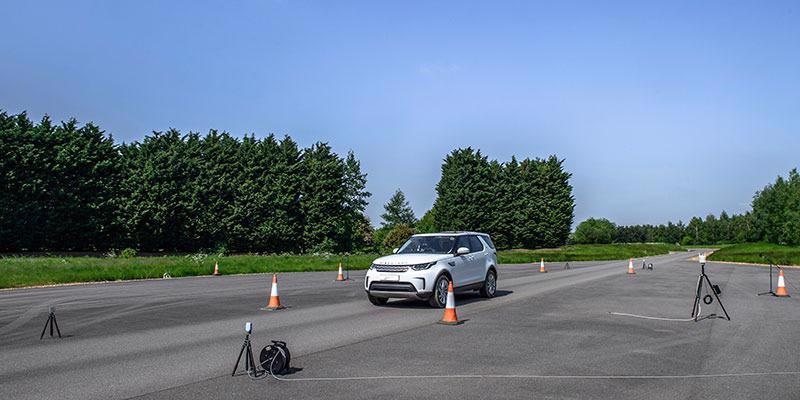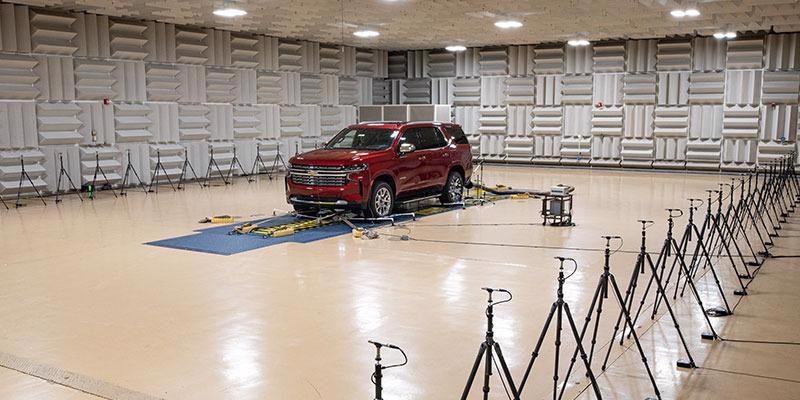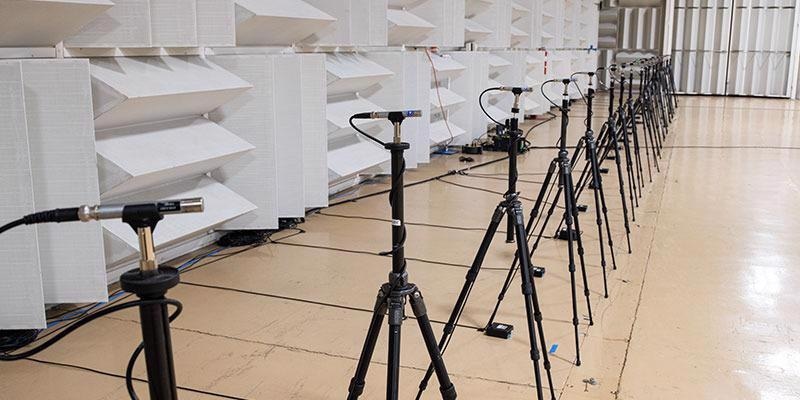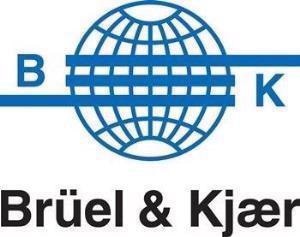To reduce traffic noise in urban environments, pass-by noise measurements must meet strict regulations for vehicle noise certification. As of December 29, 2018, homologation and conformity by indoor pass-by measurement is now permitted for buses, trucks and cars.
Excessive exposure to traffic noise has turned into a major health issue for people living in urban environments. It can cause sleep disturbance, stress, high blood pressure, headaches and an increased risk of heart disease.
Solutions are, therefore, required for both the noise source (vehicles) and the transfer paths (for example, noise barriers).
For controlling vehicle noise emission, manufacturers need to determine the pass-by noise in compliance with the regulation to ensure that their noise emissions lie within the regulation limits.
The United Nations Economic Commission for Europe (UNECE) Working Party on Noise and Tyres coordinates the regulations for its 56 member states in Europe, North America and Asia. The member states execute the regulations locally, with some requiring additional procedures.
Regulation 51 (categories M and N) is to be followed by manufacturers of passenger cars, trucks and buses, while Regulation 41 (vehicle category L3) is to be followed by manufacturers of motorcycles. The regulations are similar except for some differences in the calculation method.
Homologation tests (vehicle type approval) are usually done on an outdoor test track, which is known as field pass-by (FPB) testing. The vehicle drives down the center (reference) line of the track, passing microphones positioned on either side at a distance of 7.5 m from the centerline. This procedure is the same for both the regulations.
The highest noise level captured is reported according to the rules described in the regulations. A series of constant road speed (CRS) and wide-open throttle (WOT) acceleration tests are executed. The results are combined to form one value, known as Lurban. This must lie within the limits prescribed in the regulations.
Apart from homologation, conformance of production (CoP) must be performed according to the regulations at specified time intervals in order for the vehicle manufacturers to continue marketing their vehicles.

Figure 1. Image Credit: Brüel & Kjaer
Additional Sound Emission Provisions (ASEP) procedures are also integrated with the R41 and R51 regulations. Similar measurement procedures are used in both these regulations. This is to ensure the noise level does not vary much from the Lurban value. Specific types of vehicles should comply with these requirements and require self-certification from the manufacturers.
R51 and R41 regulations are under review with respect to ASEP, and the updated procedures are expected soon.
Indoor Pass-by Testing According to R51-03
To ensure the vehicles pass final homologation, they are tested during the vehicle development process on a chassis dynamometer in a hemi-anechoic room. As this is a controlled setting, the measurements are protected from changing weather conditions and background noise and can be made throughout the year.
The stationary vehicle on a chassis dyno makes it simple to add instrumentation or sound control measures around the vehicle for root cause analysis. This may include sophisticated noise source identification methods using microphone arrays and beamforming or holography techniques for localizing and quantifying the sound radiating from the vehicle.
Measurements for Source Path Contribution (SPC) analysis can also be performed in parallel with the indoor pass-by measurements to help identify potential design changes and optimization strategies to lower the overall vehicle pass-by noise.

Figure 2. Image Credit: Brüel & Kjaer
Indoor pass-by testing is now allowed for homologation of category M and N vehicles, but an outdoor test verification can be demanded by the Type Approval Authority. The option to mandate an outdoor test applies to any test described in R51-03, including CoP testing.
The following points must be recorded in the technical service documentation to ensure that indoor pass-by testing used for homologation and CoP is comparable to outdoor measurements:
- Validation of facility. Features such as dyno and air handling, dyno dynamic performance, free field propagation and background noise level need to be validated
- Methods required to be followed for indoor testing, for instance, loading and tie-down, air-handling and vehicle’s temperature management, dyno and software setup
- Test results on a representative selection of the manufacturer’s products to demonstrate that indoor testing provides comparable results to outdoor testing within acceptable margins
Test Equipment According to R51-03
Test Instruments
R51-03 amendment 4 stipulates that test equipment should comply with the following requirements:
- Indoor solutions use many channels and a different processing technique, which should offer comparable results to a class 1 sound level meter
- Test instruments must have equal or enhanced accuracy compared to outdoor measuring equipment
Test Room and Microphone Array
The test chamber should meet the following requirements:
- ISO 26101 for free-field validation as stipulated by the ISO 362-3 standard.
- Indoor and outdoor acoustic propagation are comparable to each other. Indoor and outdoor measurement facilities have similar deviations. Test rooms that are not sufficiently long to cover the full length of the test zone, including 20 m for assessing backfire noise, can be used provided the maximum level is evaluated with caution to avoid missing peak values (ISO 362-3:2016, Annex E). Part of the microphone array is curved around the rear of the vehicle to compensate for the shorter length. The height of the microphones is altered to enable extrapolation to the required height of 1.2 m up to the +20 m distance from the BB’ line.
The microphone array:
- The test can be done using a single-sided or a double-sided series of microphones
- The microphone array should be positioned at 7.5 m from the centerline; although it can provide comparable outcomes with a shorter distance. However, 7.5 m is the mandatory distance according to the regulation when used for homologation.

Figure 3. Image Credit: Brüel & Kjaer
Software and Microphone Arrays
The indoor pass-by software should be able to:
- Reproduce the positions similar to the FPB measurement
- Integrate time data from each microphone in the array to simulate a virtual sweep of microphones passing by the vehicle. This will mimic the vehicles passing by a single microphone and the evaluation of overall sound pressure levels as a function of track position
Tire/Road Noise and Associated Corrections
The tire noise from the dynamometer is not the same as the tire/road noise performed from an outdoor measurement. All indoor tests for homologation and CoP require a procedure for tire noise correction using outdoor measurements on a certified pass-by test facility. Only Variant A can be used for homologation and CoP as stipulated in ISO 362-3:2016 Annex B.
The procedure uses a combination of outdoor (for tire/road noise) and indoor testing (for powertrain noise). It is not essential to repeat the tire/road noise measurement each time a vehicle is tested. The data of many tires can be stored in a database and a matching dataset from the database can be used for additional tests.
The tire/drum noise in an indoor facility can be reduced by using a minimum number of driven axles on the drum, and it is expected that the tires need to be slick or have low noise. Noise barriers or other masking arrangements can be set up around the tires to additionally lower the noise contamination of the powertrain noise with tire noise from the drum when the measurement is performed.
When the remaining tire drum noise is lower than 10 dB below the maximum A-weighted sound pressure level generated by the vehicle under test, the result is adjusted by energy subtraction from indoor measurements.
Slick tires are suggested to minimize this effect. Masking of the tires can be added, provided it does not eliminate any powertrain-related noise.
ISO-362:2016 B6 directs that the evaluation be performed and recorded even when slick tires are used on the drum.
The evaluation of tire/road noise involves two procedures:
- Assessment of tire/road sound along with torque influence, which should be derived from the free-rolling noise by adopting a simplified torque influence method
- Assessment of free rolling noise
ISO 362-3:2016, Annex B.4 describes in detail all conditions required for evaluating tire/road noise, free-rolling noise and torque influence.
Total Vehicle Noise
The total vehicle noise is the energy sum of tire/road noise obtained from the outdoor measurements and powertrain noise from indoor measurements. This is measured for every single run as stipulated in ISO 362-3.2016, paragraph 10.2.4.
The same operating conditions must be ensured for the vehicles along with WOT and CRS measurements as stipulated in Regulation 51-03 annex 3 for FPB. The testing should adhere to the same noise limits for Lurban as for FPB testing.

This information has been sourced, reviewed and adapted from materials provided by Brüel & Kjær.
For more information on this source, please visit Brüel & Kjær.